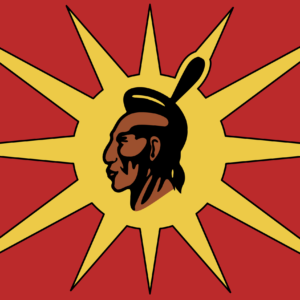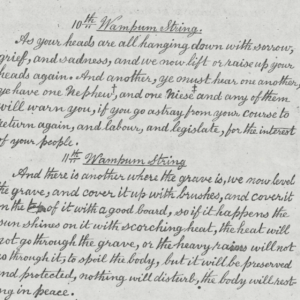
You can just tell if someone grew up on Six Nations or not. There is a certain something in the accent, mannerisms and demeanour of those who were raised up in that reservation culture. It creates a familiarity with those who share these qualities that binds us together in a good way.
That’s exactly how it was 10 years ago at ‘the site’ which was later called Kanonhstaton – The Protected Place. Canadians call it the Caledonia Conflict or Douglas Creek Estates. The people of Six Nations banded together for a righteous cause despite the criticisms and hatred they experienced from Caledonia and Canada.
To be honest, not everyone from Six Nations was behind the peaceful protest at first.
Begun by three women in the cold of February, the masses gathered after the early morning raid of April 20, 2016. Even groups of the highly respected Clan mothers could be seen in the front lines after the OPP tried to remove our people.
But as the tension mounted for weeks after the raid, a court injunction was served by the province and some started to lose their nerve.
At a certain Men’s Council meeting, a Runner was sent to persuade the people to leave the site. He had used a condolence cane and cultural teachings as an explanation why the men should pack up, take the barricades down and go home.
When this didn’t work it was reported that someone had sent men to physically remove tents. That didn’t work either.
It became apparent that The People were in control, and the general assembly of men was taking direction from the women’s council. For a brief moment our society was operating just as the Peacemaker had intended. The people had risen.
The recent INAC takeovers in Toronto and Vancouver remind us of those days when we fulfilled our duties and responsibilities to stand up for justice and to honour our ancestors – even though it was against both Confederacy and Canadian law.
When those barriaces on Argyle Street were up, the people at the site became a family, we would deliberate and make decisions as a whole, there was no external control over us at that time. One can only imagine how the protestors inside #occupyINAC buildings are bonding.
We have no King. We do not kneel or bow before anyone. We were all created as equals – women, men, children, elderly, and disabled.
According to the work “Myths of Male Dominance” by Eleanor Burke Leacock, Jesuit missionaries imposed the concept of male authority on our egalitarian society. They said that if they could appoint someone as chief above everyone else they could influence and infiltrate indigenous nations.
There has been a rumour started in our community that the Two Row Times is against the chiefs. Let me be clear that as editor I am supportive and proud of the political system that was codified by the Peacemaker (Gayanasrakowa), but am vehemently opposed to the English word ‘chief’.
If we take a microscope to this Jesuit word we can see that the concept of a chieftain has Jewish origins.
קָצִין (kaw-steen) is an ancient Hebrew word that has been translated into English as chief or ruler. אַ֫יִל (aw-yil) also means masculine leader, chief, ram, as leader of flock, ram with two horns symbolizing kingship. It’s closely connected with the word god – highly exalted one.
Words have so much power. So when we use the word chief, do we really mean lord or ruler? There was a time not too long ago when our appointed men were referred to as Confederate Lords. Just google it.
So what should we say then?
The proper term for the man who speaks on behalf of their clan is Royáner in Kanien’keha (Hoyáneh in Cayuga) and we would like to honour the title by using these real words. According to a number of language speakers this word shares its root with yoyánere which is usually translated as good.
The most literal translation for Royáner could then be – He’s on a good path. In the plural form it would be Rotiyanéhson in Kanien’keha (Hodiyaneshu in Cayuga) which we could translate as The Good Men.






